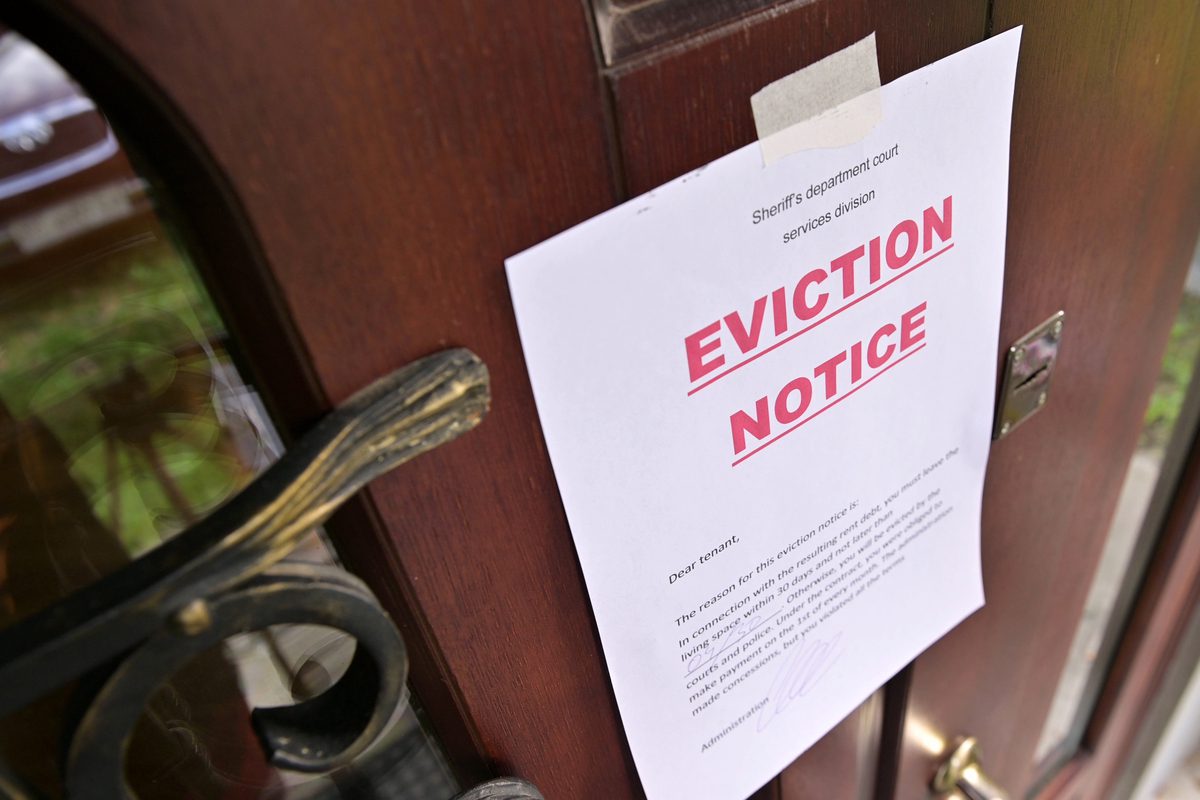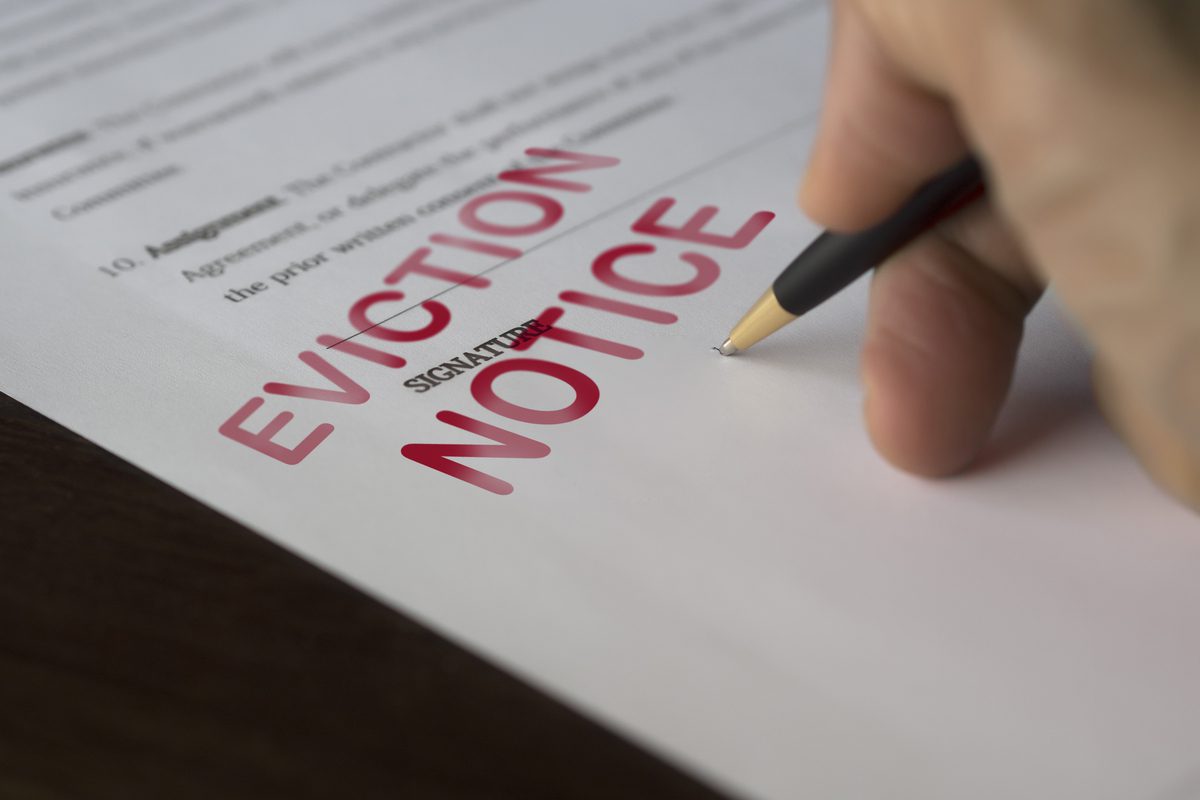How to Legally Evict a Tenant from Your Rental Home
Evicting a tenant is something that most rental property owners hope never comes up. Unfortunately, however, issues do arise from time to time and evictions are sometimes unavoidable.

The tenant eviction process is complex, costly and one of the toughest parts of owning a rental home. Before moving forward with an eviction, you should do everything you can to work things out with the tenant. If it can't be avoided, here are tips on how to evict a tenant from your rental home.
Know your local eviction laws
Eviction laws vary by state and sometimes municipality. It's vital that you understand the laws in effect at your rental location. Factor them into your lease agreements so that you and your tenant are on the same page in case there's an issue. Eviction laws can get complicated. You can always hire an attorney to help you craft the lease agreement and explain the eviction process.
Along with understanding the law, also be sure to check for local eviction moratoriums or guidelines that could affect the eviction before beginning the process.
Make sure you have grounds for an eviction
Before starting the tenant eviction process, you need to have a valid reason. Some state eviction laws spell out acceptable reasons to evict a tenant. Here are some common instances that could be grounds for a tenant's eviction:
- Not paying rent
- Consistently paying rent late
- Damaging property
- Violating lease agreements
- Engaging in illegal activity at the home
- Staying once the lease expired
- Subletting without permission
You'll need to prove any claim you make against your tenant, such as emails or letters about late or missing rent payments or photographs of property damage.
Try to talk to your tenant first
An eviction is a hardship for both you and your tenant, so a little understanding goes a long way. If you have a good relationship with your tenant, it's worth talking to them and trying to work out the problem before starting the eviction process. You might be able to come to an agreement for the tenant to leave the property to avoid eviction —and, that would make things easier for everyone.
If not, don't try to handle the situation yourself. Never remove the tenant's belongings from the home, change the locks or cut off the utilities. When you can't come to an agreement, that's when to start the legal tenant eviction process.
How to evict a tenant

Once you've determined that eviction is unavoidable, there are several steps to take to evict a tenant:
Step 1: Provide a formal eviction notice
To start the eviction process, you must send a formal eviction notice to your tenant. The notice lets your tenant know that you're planning to evict and gives them time to remedy the situation or leave the home. There are a few types of eviction notices, depending on the circumstances, including:
- Notice to Quit: An eviction notice without an opportunity to remedy the situation
- Notice to Pay or Quit: This notifies tenants that they must pay an outstanding rent balance by a certain date or leave the home
- Notice of Lease Violation: This lets tenants know they've violated their lease agreement and gives them a timeframe to find a solution and consequences if there isn't a resolution
- Notice of Termination: This occurs when the property owner isn't renewing the lease agreement
The eviction notice should include the following information:
- Property address
- Date when the tenant must move out or clear up the violation
- Exact amount a tenant owes, if not paying rent is the issue
- Detailed description of why the tenant is getting evicted, such as property damage
- Explanation of why the situation violates the lease agreement
Leave the notice on the tenant's front door and send it via certified mail with delivery receipt so you have a record. Make sure the notice gets delivered a certain number of days before filing the eviction with the court, depending on local eviction laws.
Step 2: File the eviction with the court
If after receiving the notice the tenant doesn't pay their outstanding rent or resolve other problems, the next step is to take it to court. The exact process for filing an eviction with the courts varies depending on where you live, so it's a good idea to give your local courthouse a call for the details.
Eviction paperwork usually needs filing in person at your local courthouse. You'll have to pay a fee and show proof that you gave the tenant the legal amount of time for an eviction notice. A hearing will get scheduled, and the court will inform the tenant of the filing.
Step 3: Prepare for court
It's important to attend the court hearing, as it's an opportunity to make your case for removing the tenant from your property. You can represent yourself or hire an attorney to represent you. Either way, you'll need to show evidence to prove your case, so bring the following items with you:
- The original lease agreement signed by you and the tenant
- Payment records
- Returned checks or payments
- Records of communication, including calls and emails, between you and the tenant
- A copy of the formal eviction notice
- A post office receipt or tenant signature showing the tenant was given notice
Step 4: Proceed with the eviction
If the court rules in your favor, the tenant will be given a specified amount of time to move out. How much time depends on your local eviction laws.
Hopefully, the tenant will move out within that timeframe. If they refuse to leave your rental, you might have to contact the local police. A police officer will give the tenant a notice to vacate the property within a couple of days or escort the tenant from the home and remove their belongings.
Step 5: Collect unpaid rent
Even if the eviction hearing goes in your favor, you still need to file a small claims lawsuit to collect any outstanding rent. If the court sides with your case, you'll receive a formal court order which will be given to the tenant's employer. The order requires their employer to garnish the tenant's wages, or take it out of their paycheck, to repay you for the rent.
Understanding the tenant eviction process
Evicting a tenant is unavoidable sometimes, no matter how much you try to resolve problems with your tenant. Knowing your local eviction laws is crucial for handling the situation legally. And, each step in the tenant eviction process is important to protect you and your rental property.
